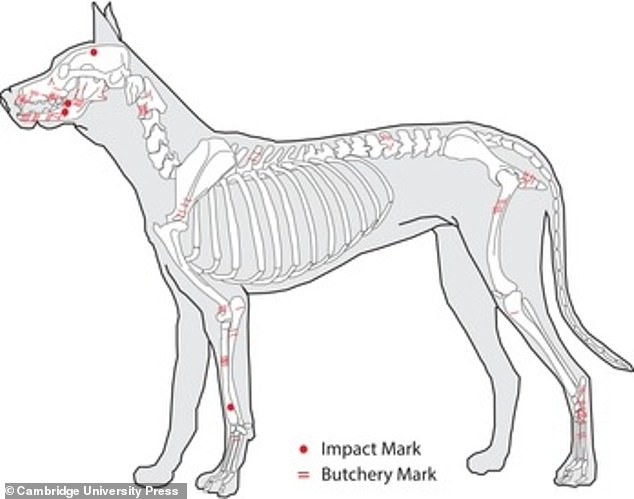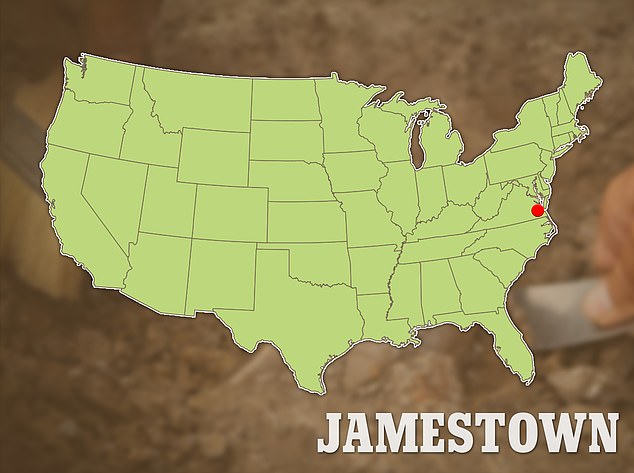The first English settlers to North America ate dogs to survive an extreme period of famine, according to a shocking new study.
Researchers at the University of Iowa discovered the remains of 16 indigenous dogs at an archaeological site in Jamestown, Virginia, strongly suggesting that 17th-century settlers ate at least six canines.
Their remains showed distinctive signs that settlers had skinned the animals, dismembered their limbs and removed meat from their bones between 1609 and 1617 AD, the team said.
The events occurred during the ‘Hungry Time’, when food shortages, fractured leadership, disease, and violence with indigenous tribes wiped out the Jamestown community.
Archaeologists found the remains of 16 indigenous dogs and confirmed that English settlers killed them for food in the early 17th century. The canines were found in the settlement of Jamestown, Virginia.
Archaeologists excavated approximately one acre of land within the boundaries of Fort James.
They recovered 181 canine bones from garbage deposits in an old workshop, two wells and inside a construction trench for the fort’s defense walls.
The “butchered dog remains…certainly date from the Jamestown famine during the winter of 1609-1610, indicating that indigenous dogs were eaten during this period of severe famine,” the study saying.
Archaeologists said the practice was not uncommon at the time.
“Although the consumption of dog meat in modern Western societies is considered taboo, there is a long history of eating dogs during periods of stress in England and other parts of Europe,” they wrote.
The famine period killed between 80 and 90 percent of the English colonists due to food shortages, contaminated water supplies, and a harsh winter.

Archaeologists found 181 canine bones belonging to 16 dogs, and said at least six had been eaten by English settlers between 1609 and 1617.
In the spring of 1610, only about 60 of the original settlers were still alive and George Percy, one of the original settlers, wrote an account of what happened after the famine period.
‘Now all of us in James Town begin to feel that sharp pang of hunger that no one really describes except those who have tasted its bitterness.
“…Then, having fed on horses and other beasts as long as they lasted, we were glad to be able to do something with vermin like dogs, cats, rats and mice,” Percy wrote in excerpts from his story titled “Hunger of Hunger.” archived by National Humanities Center.
He added that the settlers resorted to cannibalism as a means of survival and dug up “corpses from the graves and ate them, and some licked the blood that fell from their weak companions.”
Archaeologists reported that the dogs’ DNA was of Native American ancestry, and shared similarities with dogs from the Hopewellian, Mississippi, and Late Woodland periods of eastern North America.
This meant the social problems that arose between the colonizers and the indigenous communities, according to the study.
“It suggests complex forces at play before, during and after the Famine Era that influenced the presence of these dogs at the fort and led Jamestown residents to consume dogs of indigenous ancestry,” according to the study.


